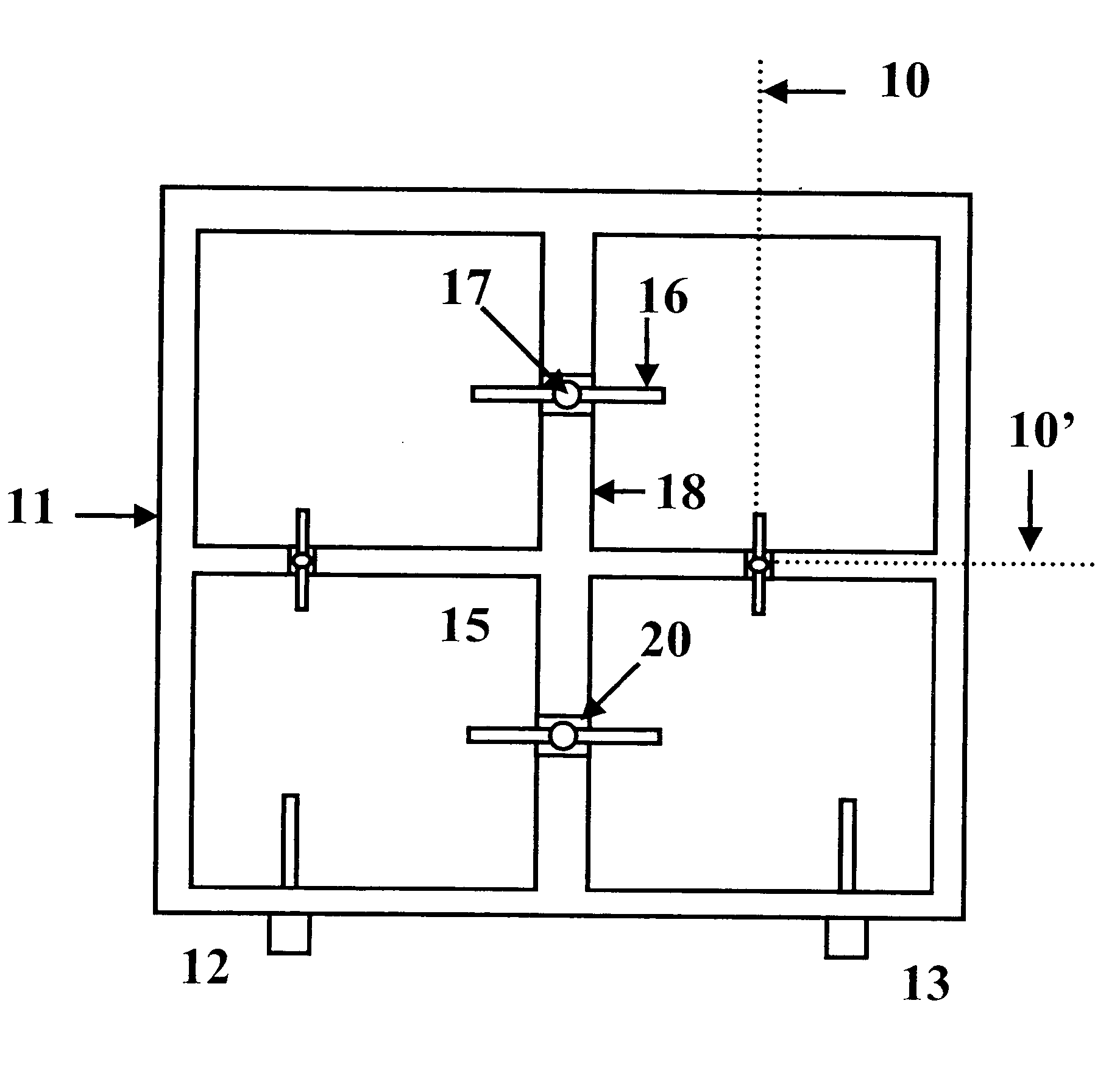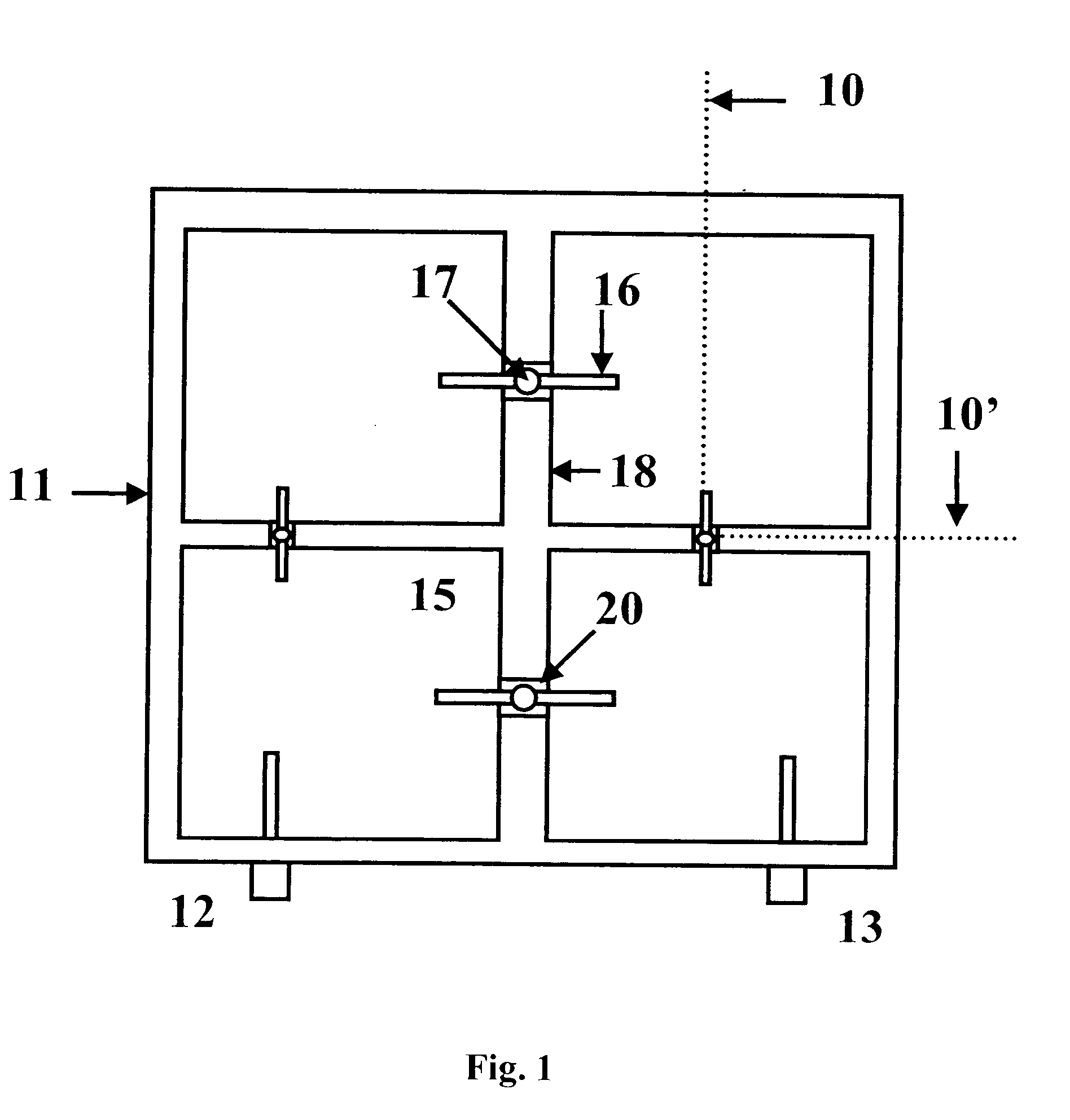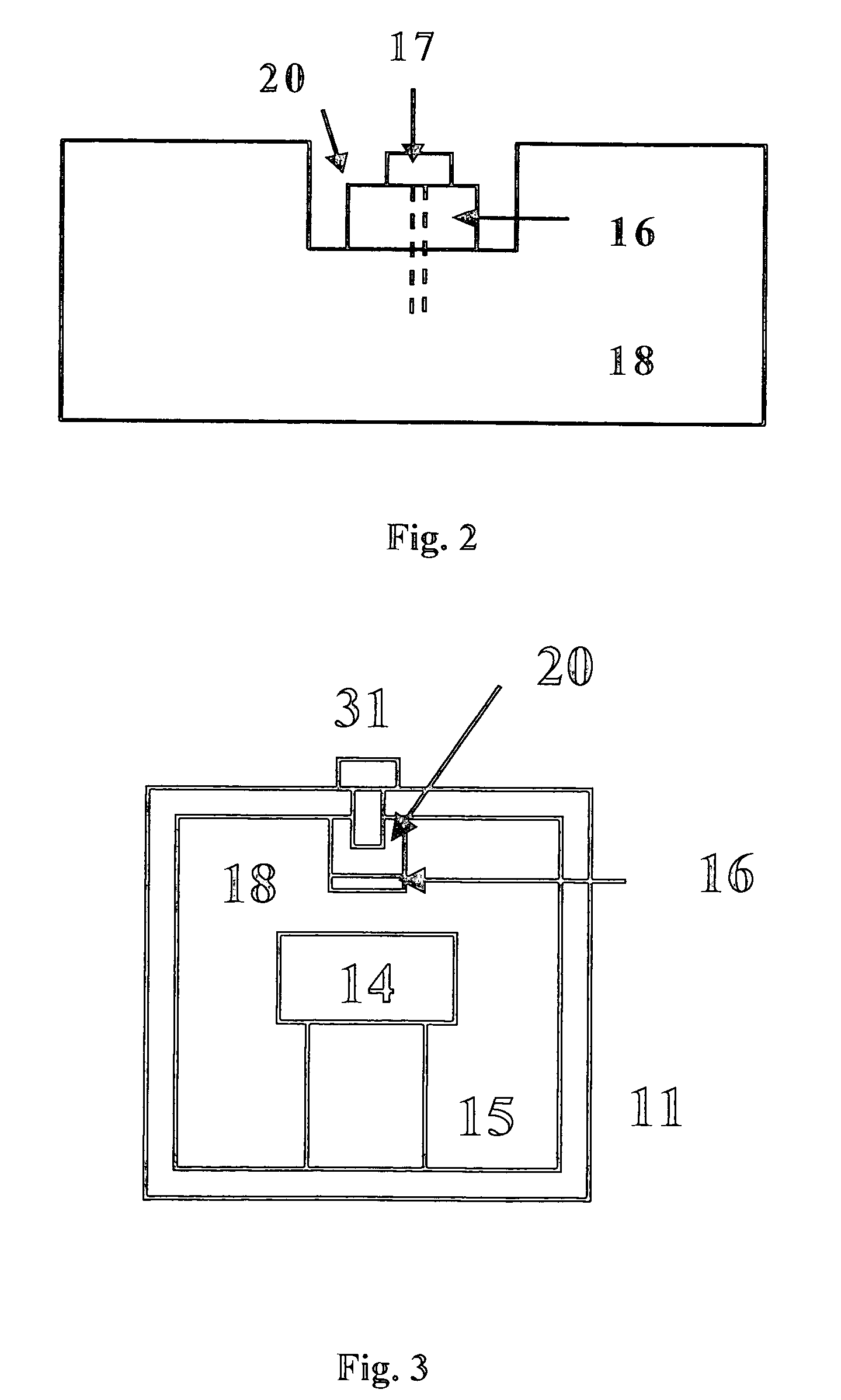Dielectric resonator filter
a dielectric resonator and filter technology, applied in the direction of resonators, waveguides, line-transmission, etc., can solve the problems of inability to provide diagonal cross coupling, the coupling structure cannot be located between adjacent non-sequential cavities, and the coupling structure cannot be located at the outer wall
- Summary
- Abstract
- Description
- Claims
- Application Information
AI Technical Summary
Benefits of technology
Problems solved by technology
Method used
Image
Examples
Embodiment Construction
[0018] FIG. 1 illustrates an enclosure 11 of a direct coupled resonator filter which defines a plurality of resonant cavities 15. As illustrated in FIG. 3, each cavity 15 could contain a resonator 14, respectively. The resonator 14 can be dielectric, coaxial, or the like.
[0019] Turning now to FIG. 1, the filter further includes input and output devices 12 and 13 for receiving and transmitting an electromagnetic wave of greater power. The wave is filtered upon passing through the resonant cavities 15.
[0020] The enclosure 11 includes a peripheral outer wall surrounding the resonant cavities 15, such that an inner wall 18 is defined for separating two adjoining resonant cavities 15. A base wall of the housing defines the bottom of the filter housing 11. For example, an upper lid could cover the cavities 15, not shown for the sake of clarity. Input 12 and output 13 devices are provided and mounted on the same side of the housing 11. Note that they can be located in different sides of th...
PUM
 Login to View More
Login to View More Abstract
Description
Claims
Application Information
 Login to View More
Login to View More - R&D
- Intellectual Property
- Life Sciences
- Materials
- Tech Scout
- Unparalleled Data Quality
- Higher Quality Content
- 60% Fewer Hallucinations
Browse by: Latest US Patents, China's latest patents, Technical Efficacy Thesaurus, Application Domain, Technology Topic, Popular Technical Reports.
© 2025 PatSnap. All rights reserved.Legal|Privacy policy|Modern Slavery Act Transparency Statement|Sitemap|About US| Contact US: help@patsnap.com



